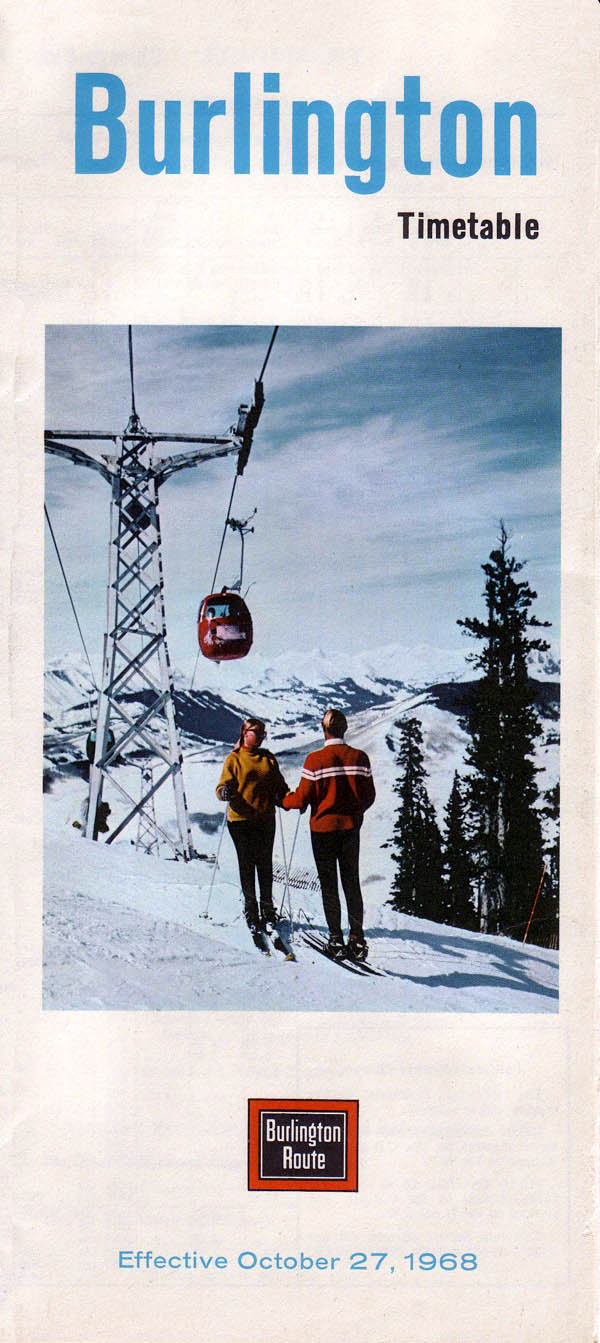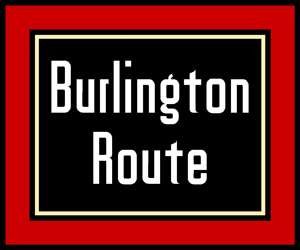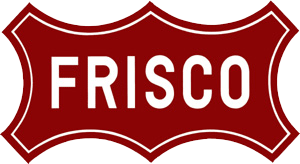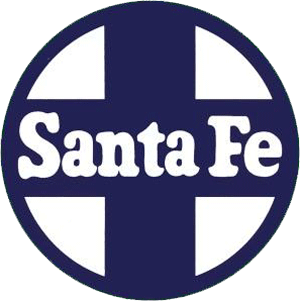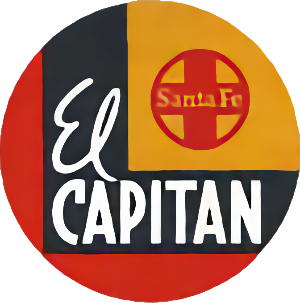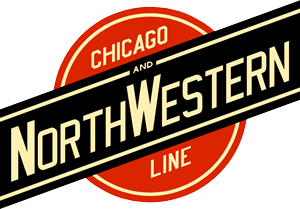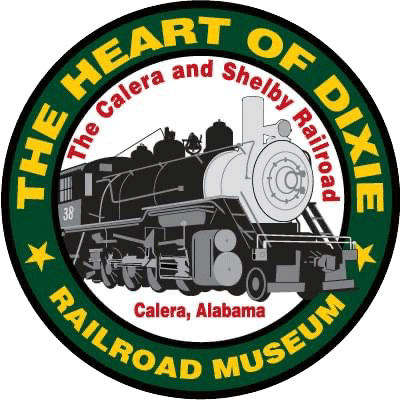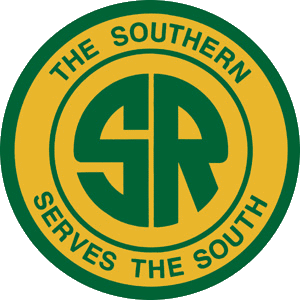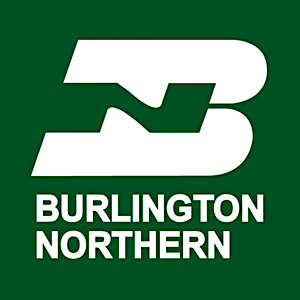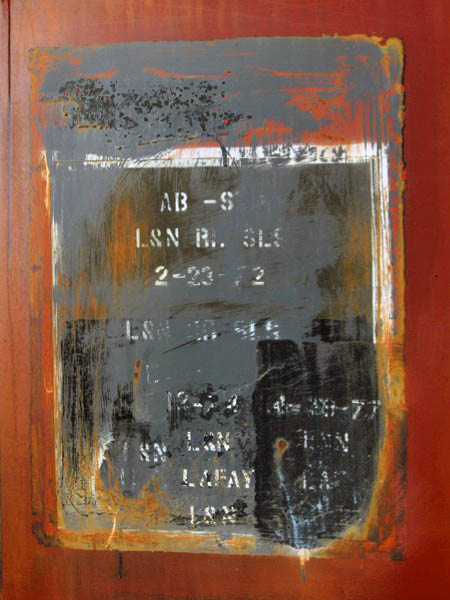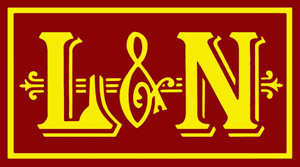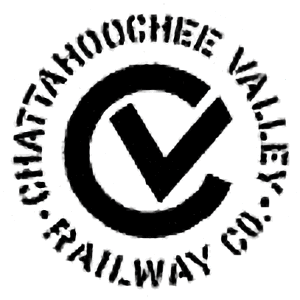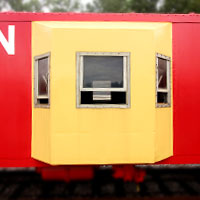 |
Heart of Dixie Railroad Museum Rolling Stock |
Passenger
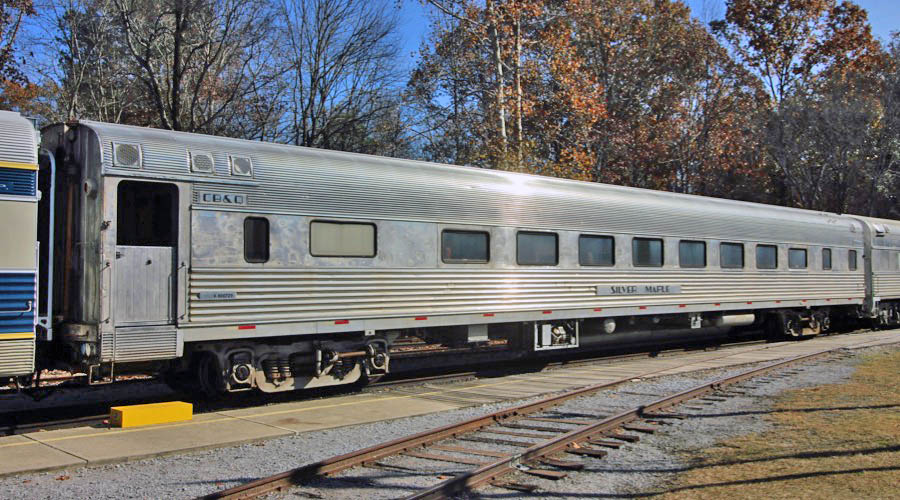
Chicago, Burlington & Quincy #4741 "Silver Maple"
Calera, Al / Nov 2019 / RWH
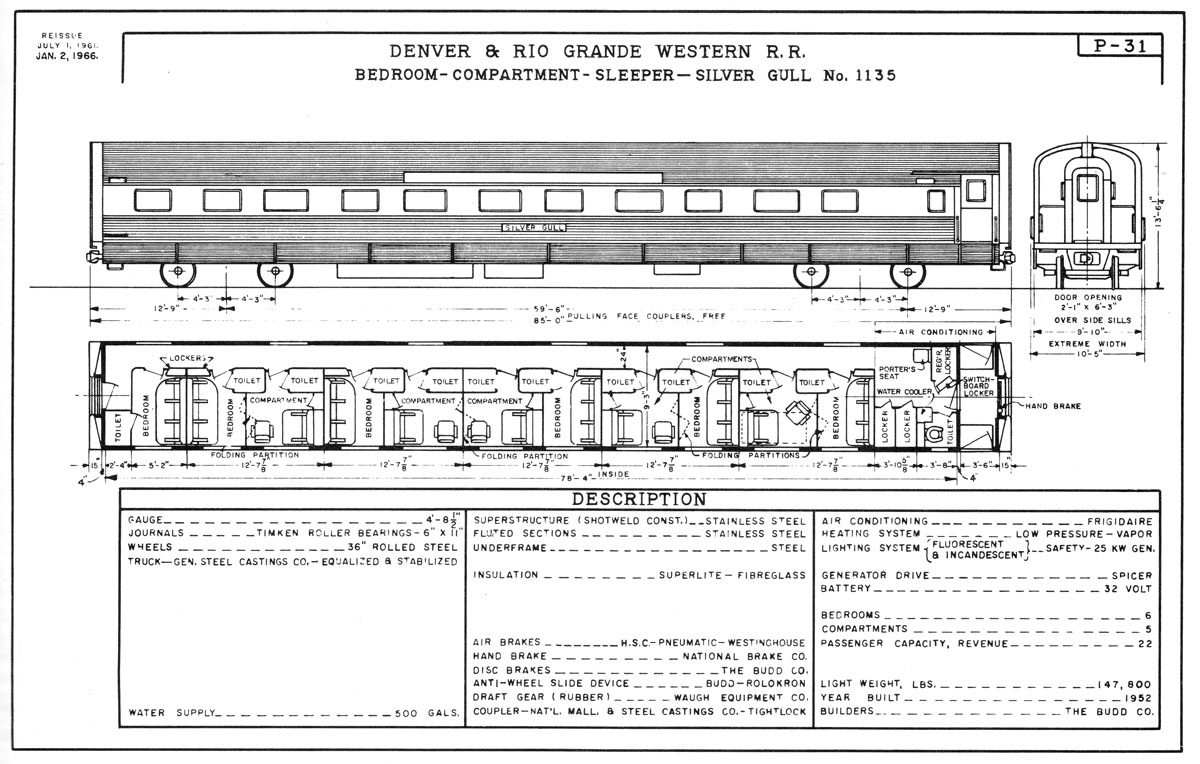
from CZ: The Story of the California Zephyr
- Karl Zimmermann / collection

See also our California Zephyr route scrapbook in Amtrak Mainlines
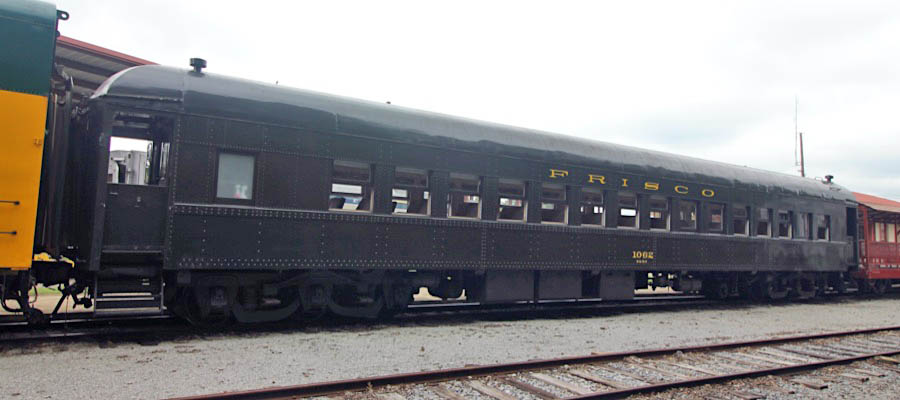
St. Louis - San Francisco #1062
American Car & Foundry coach (1010)
/ Calera, Al / Aug 2021 / RWH
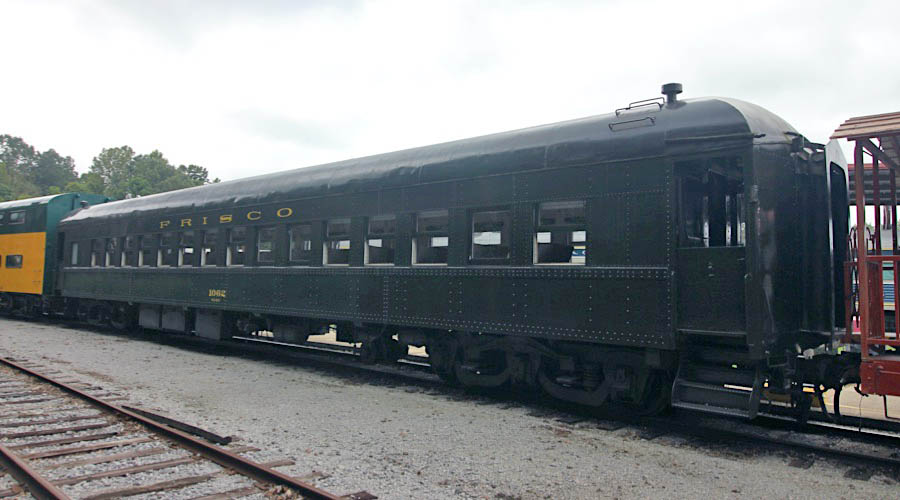
Calera, Al / Aug 2021 / RWH
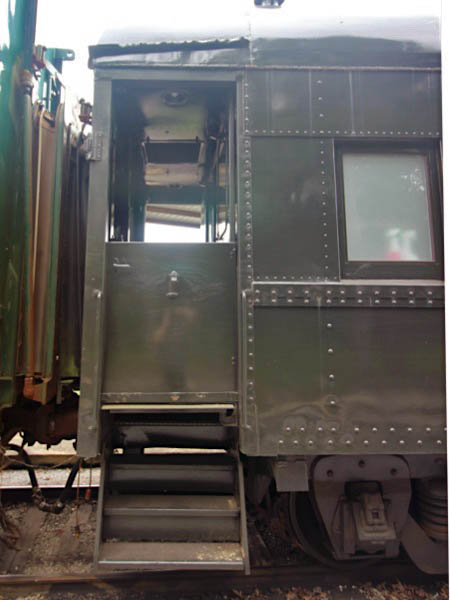
Aug 2021 / RWH
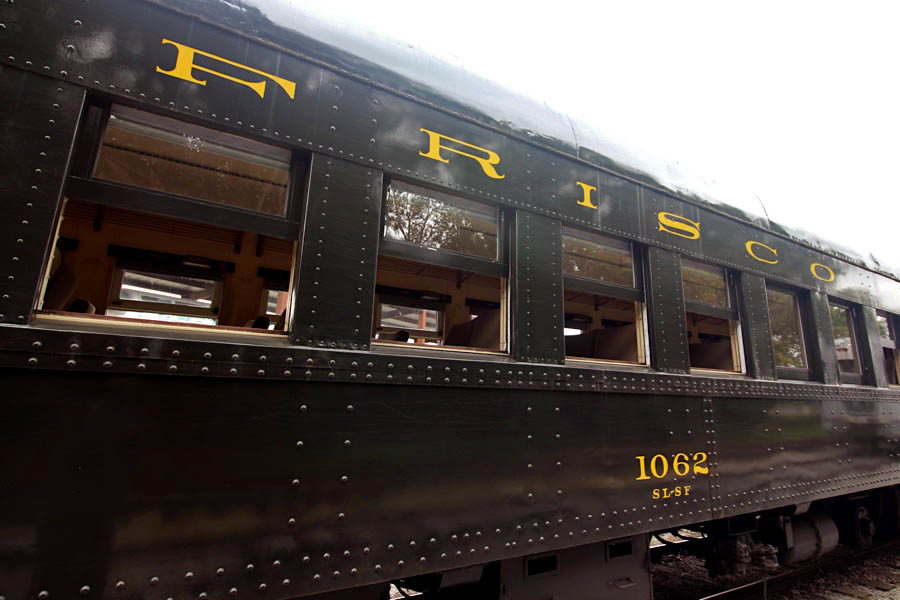
Aug 2021 / RWH

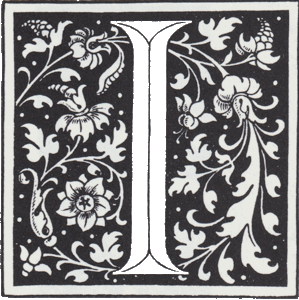 n September of 1910, the American Car & Foundry Company completed construction of No. 1062, one of twelve 60-seat coaches numbered No. 1052 through No. 1063, lot No. 5522. The new cars were built for the St. Louis - San Francisco Railway (SLSF), better known as Frisco Lines. The new all-steel construction coach was a type of passenger car which would be known as a heavyweight car. Heavyweight cars had a steel frame, sides, and roof and thus rode more smoothly than earlier wooden coaches with truss-rod bracing. The brand-new No. 1062 offered Frisco passengers the latest in coach passenger comfort.
n September of 1910, the American Car & Foundry Company completed construction of No. 1062, one of twelve 60-seat coaches numbered No. 1052 through No. 1063, lot No. 5522. The new cars were built for the St. Louis - San Francisco Railway (SLSF), better known as Frisco Lines. The new all-steel construction coach was a type of passenger car which would be known as a heavyweight car. Heavyweight cars had a steel frame, sides, and roof and thus rode more smoothly than earlier wooden coaches with truss-rod bracing. The brand-new No. 1062 offered Frisco passengers the latest in coach passenger comfort.
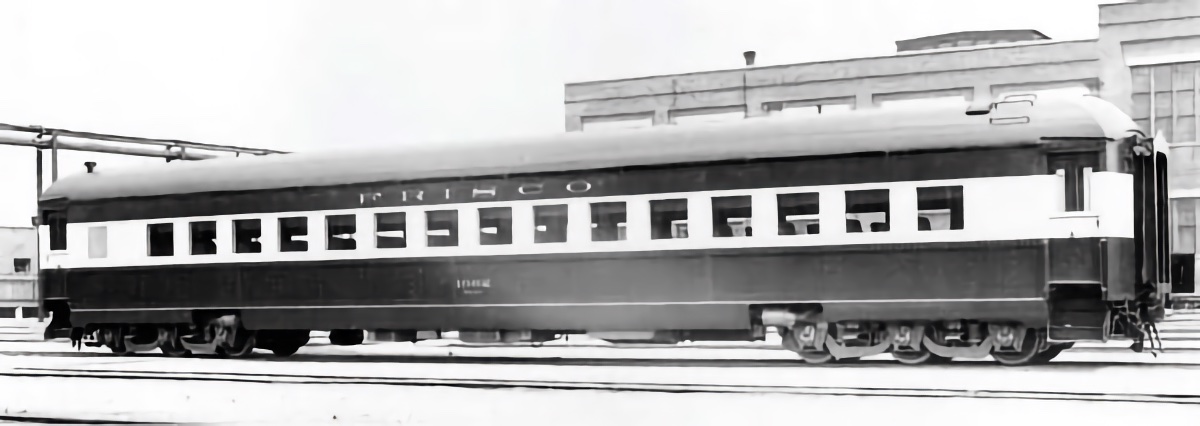 When the Heart of Dixie Railroad Museum began operations on the Calera & Shelby Railroad in the fall of 1994, the No. 1062 returned to duty in regular passenger service, although as an open-window coach. In recent years the windows and upholstery were replaced. The No. 1062 has now been hauling passengers for over 100 years. One wonders how many passenger miles the car has accumulated over its long life: 57 of those years for the Frisco and over 43 more with the Heart of Dixie Railroad Museum. It is hoped that the car will be maintained and continue to operate and tell its story well into the 21st Century. With proper care, perhaps the car will someday celebrate its second centennial!
When the Heart of Dixie Railroad Museum began operations on the Calera & Shelby Railroad in the fall of 1994, the No. 1062 returned to duty in regular passenger service, although as an open-window coach. In recent years the windows and upholstery were replaced. The No. 1062 has now been hauling passengers for over 100 years. One wonders how many passenger miles the car has accumulated over its long life: 57 of those years for the Frisco and over 43 more with the Heart of Dixie Railroad Museum. It is hoped that the car will be maintained and continue to operate and tell its story well into the 21st Century. With proper care, perhaps the car will someday celebrate its second centennial!
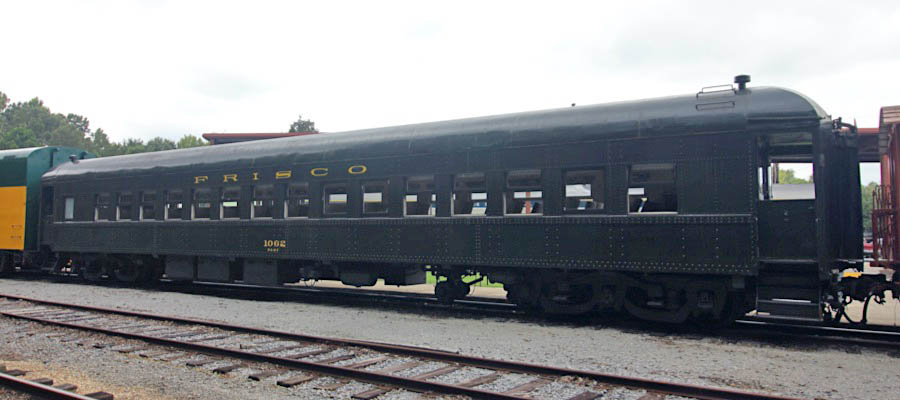
Calera, Al / Aug 2021 / RWH
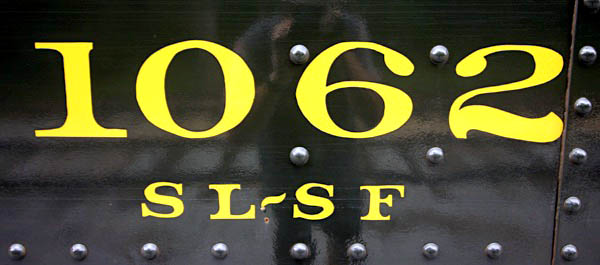
Aug 2021 / RWH
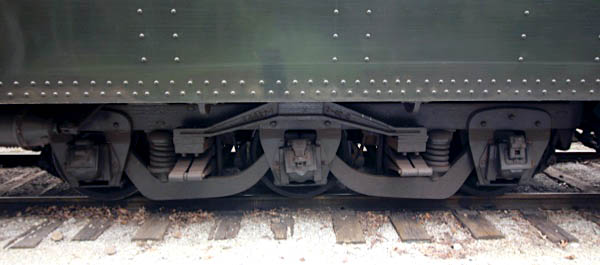
Aug 2021 / RWH
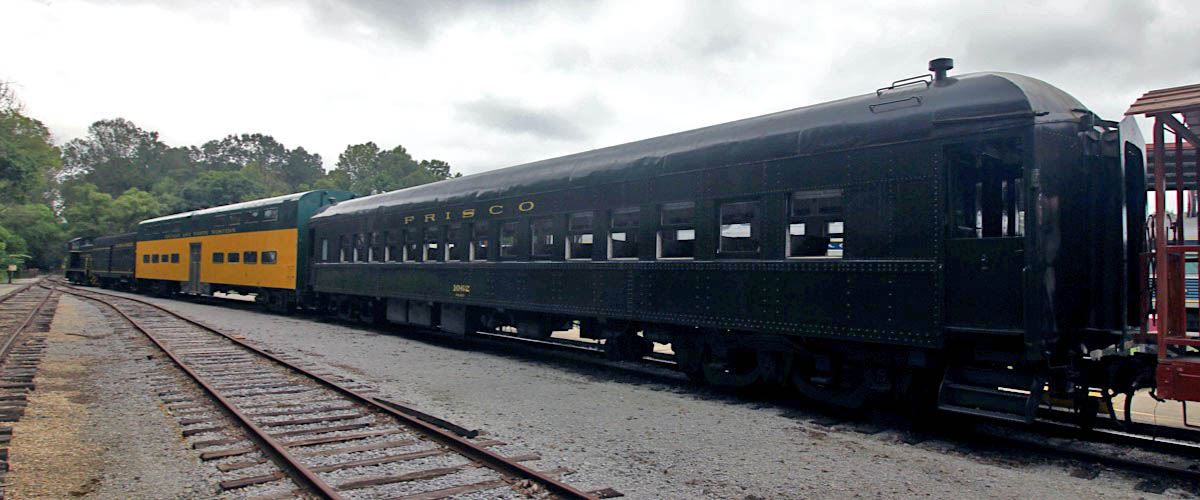
Calera, Al / Aug 2021 / RWH
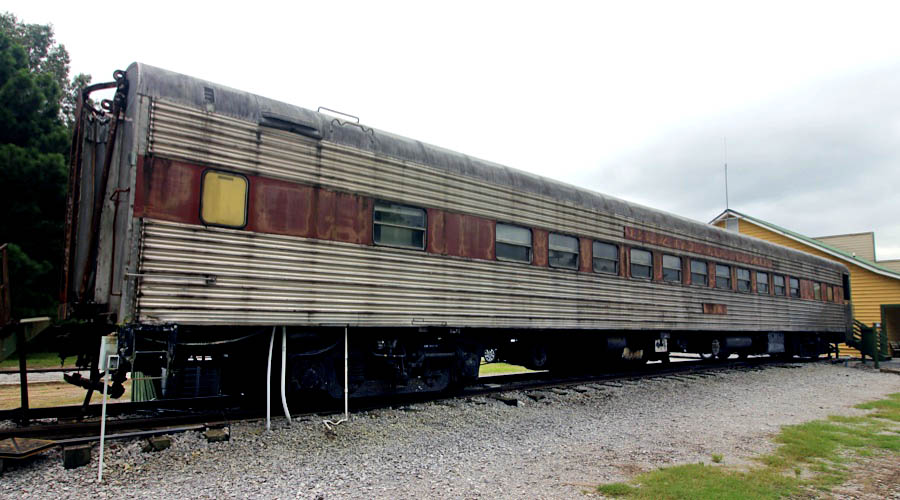
Atchison Topeka & Santa Fe #2931
Pullman coach (1950) / Calera, Al / Aug 2021 / RWH
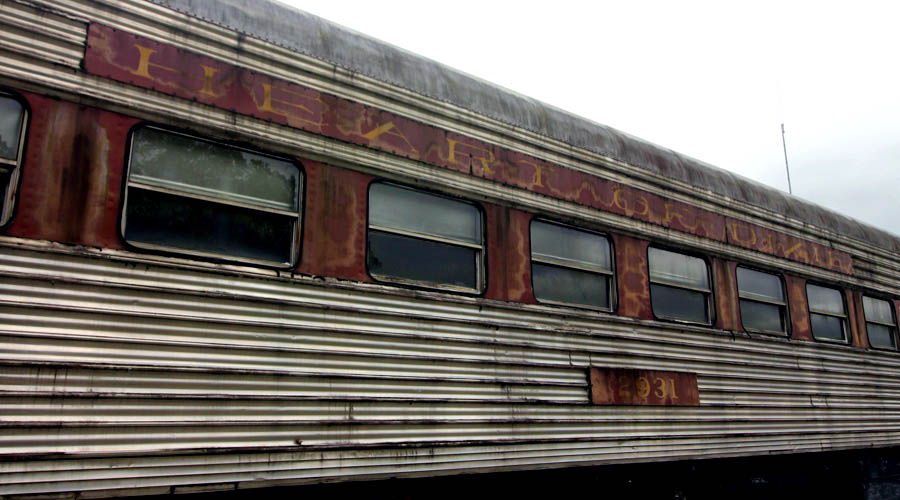
Aug 2021 / RWH
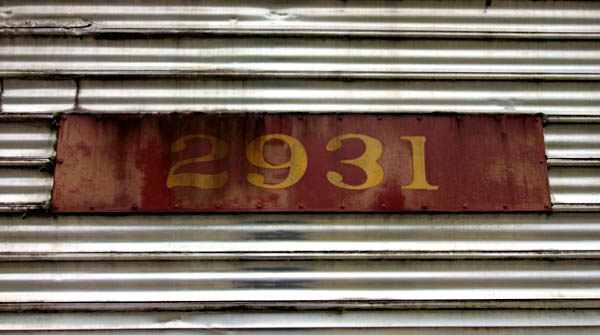
Aug 2021 / RWH

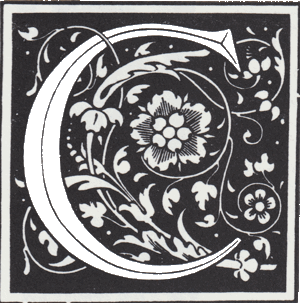 hair car No. 2931 was ordered by the Santa Fe for use on their train the EL CAPITAN. The EL CAPITAN was America’s first and only deluxe all-chair-car transcontinental train. The train ran from Chicago to Los Angeles in only thirty-nine hours and forty-five minutes. The term Chair car is intentionally used in place of the term "coach" because a chair car was specifically designed for long distance travel, had full extending leg rests, and the seat backs reclined fully. In most cases, a typical coach may lack leg rests, only have a footrest and only limited adjustment to the seat back. The Santa Fe, intended this to be on long distance trains for the duration of its life and therefore it was referred to as a Chair Car. The El Capitan was the only all-coach or "chair car" (non-Pullman sleeper) to operate on the Santa Fe main line between Chicago and Los Angeles. It ran on the same fast schedule as the railroad's premier all-Pullman Super Chief.
hair car No. 2931 was ordered by the Santa Fe for use on their train the EL CAPITAN. The EL CAPITAN was America’s first and only deluxe all-chair-car transcontinental train. The train ran from Chicago to Los Angeles in only thirty-nine hours and forty-five minutes. The term Chair car is intentionally used in place of the term "coach" because a chair car was specifically designed for long distance travel, had full extending leg rests, and the seat backs reclined fully. In most cases, a typical coach may lack leg rests, only have a footrest and only limited adjustment to the seat back. The Santa Fe, intended this to be on long distance trains for the duration of its life and therefore it was referred to as a Chair Car. The El Capitan was the only all-coach or "chair car" (non-Pullman sleeper) to operate on the Santa Fe main line between Chicago and Los Angeles. It ran on the same fast schedule as the railroad's premier all-Pullman Super Chief.
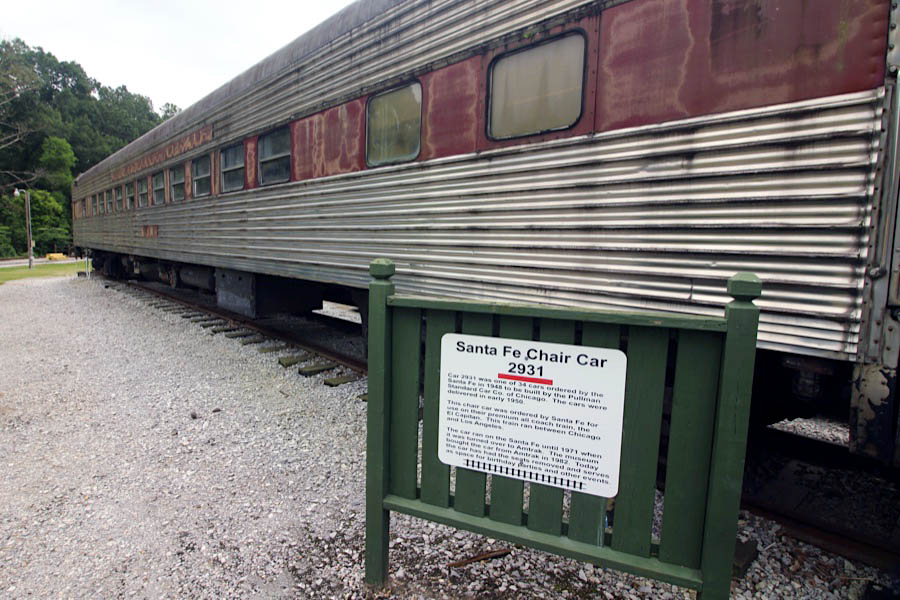
Aug 2021 / RWH
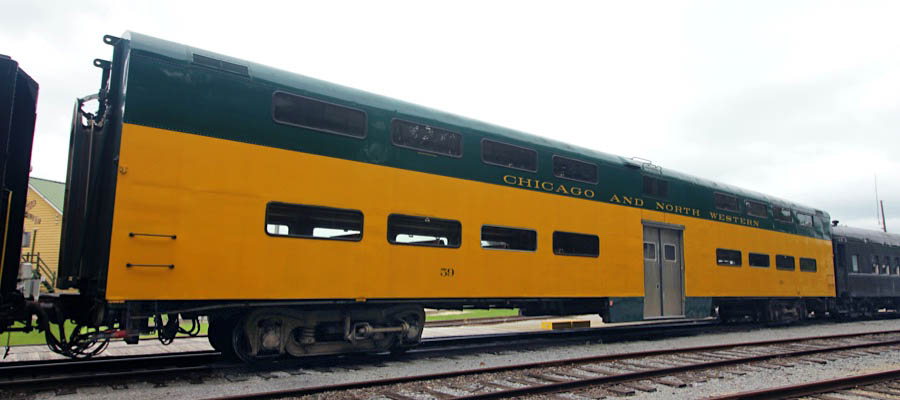
Chicago & North Western #59
Pullman commuter car (1960) / Calera, Al / Aug 2021 / RWH
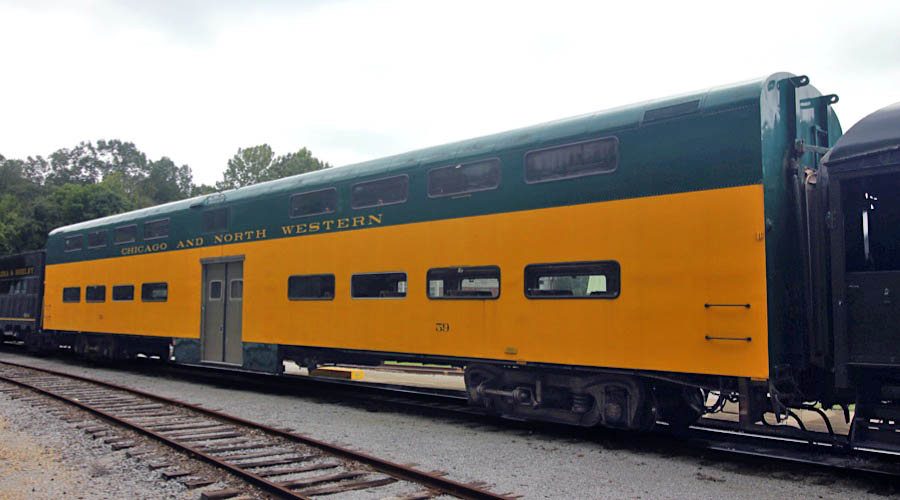
Calera, Al / Aug 2021 / RWH
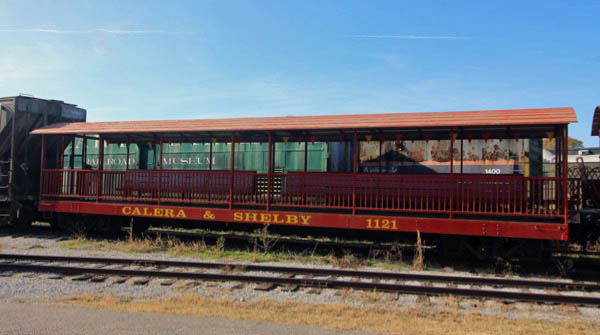
Calera & Shelby #1121
excursion car / Calera, Al / Nov 2019 / RWH
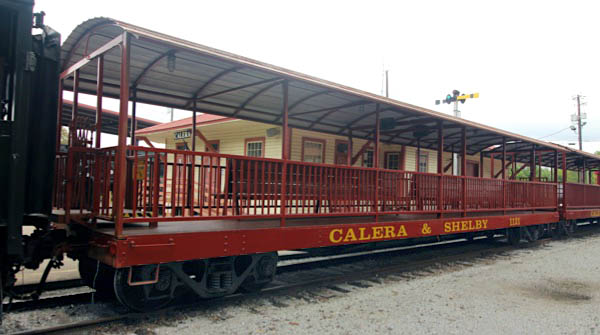
Calera, Al / Aug 2021 / RWH
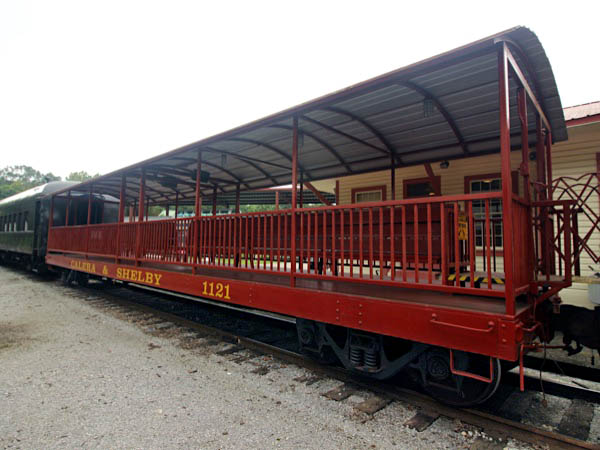
Calera, Al / Aug 2021 / RWH
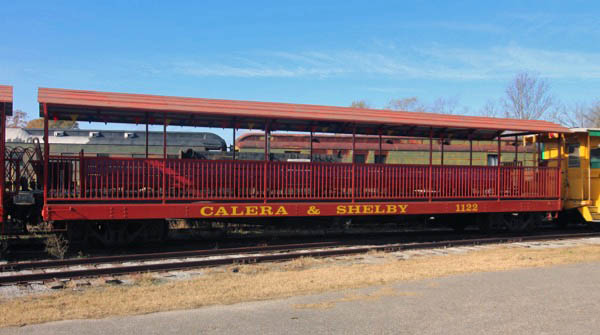
Calera & Shelby #1122
excursion car / Calera, Al / Nov 2019 / RWH
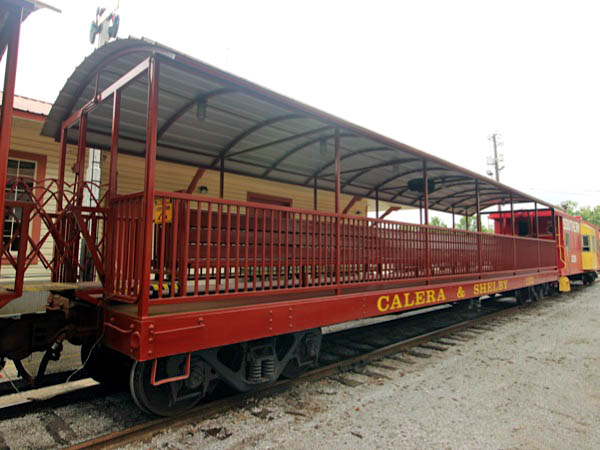
Calera, Al / Aug 2021 / RWH
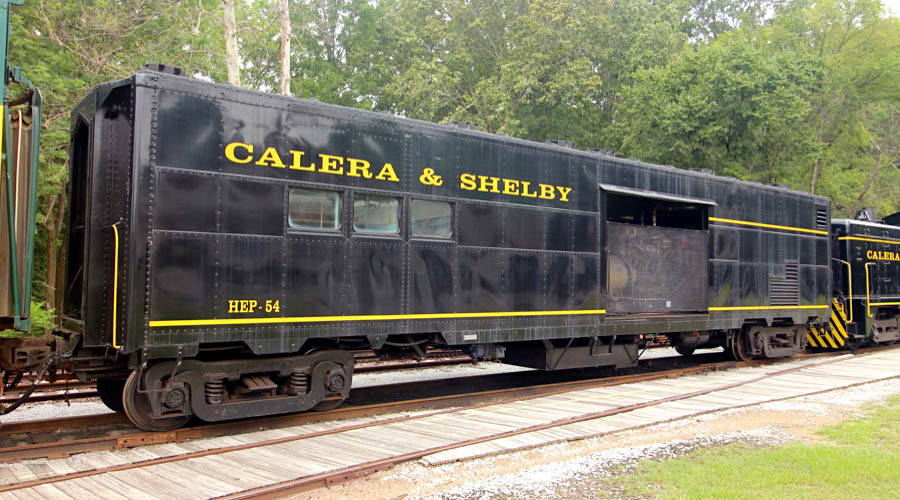
Calera & Shelby #54
power car / Calera, Al / Aug 2021 / RWH
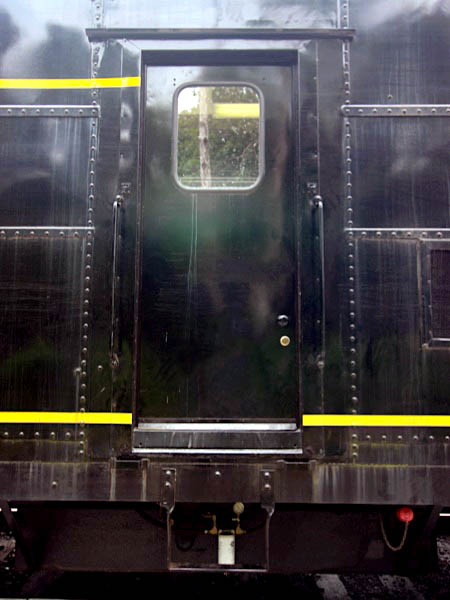
Aug 2021 / RWH
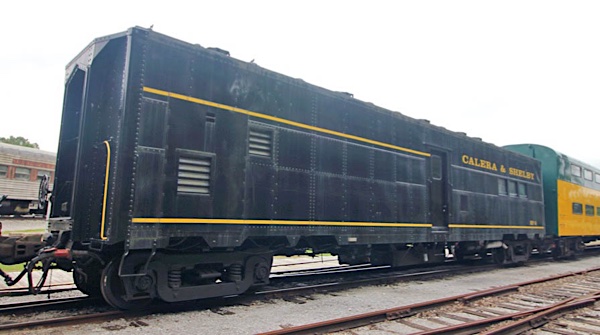
Aug 2021 / RWH
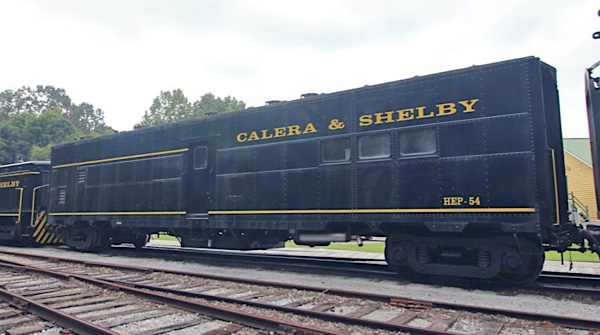
Aug 2021 / RWH

Aug 2021 / RWH
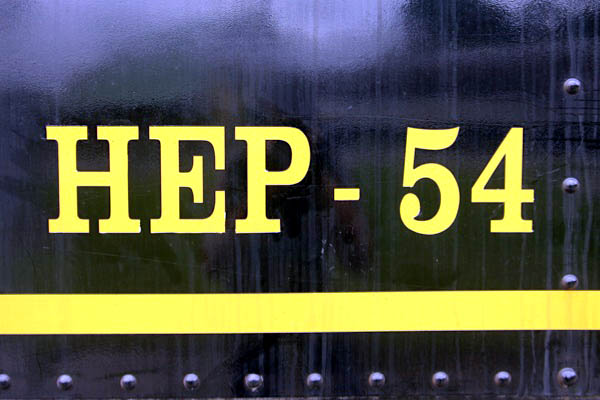
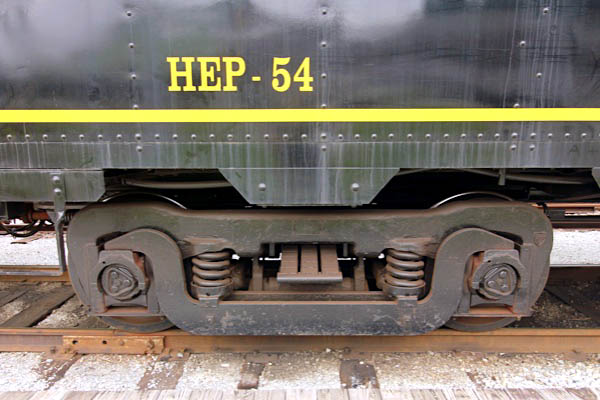
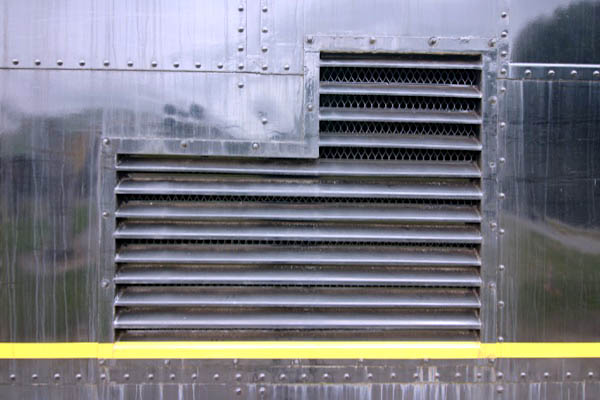
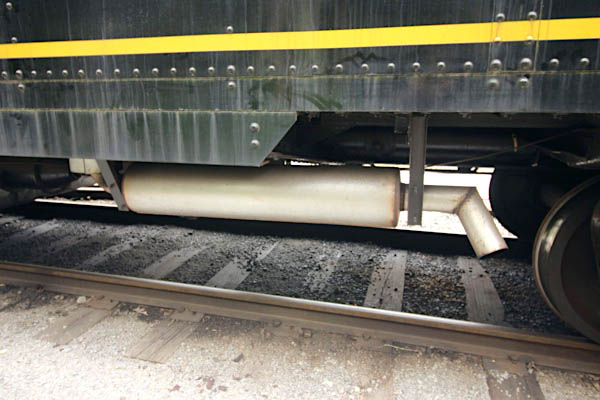
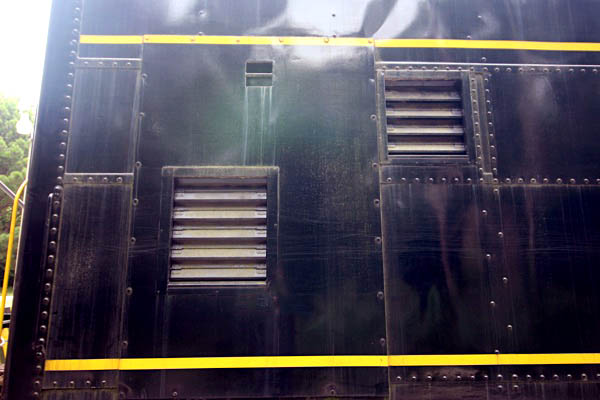
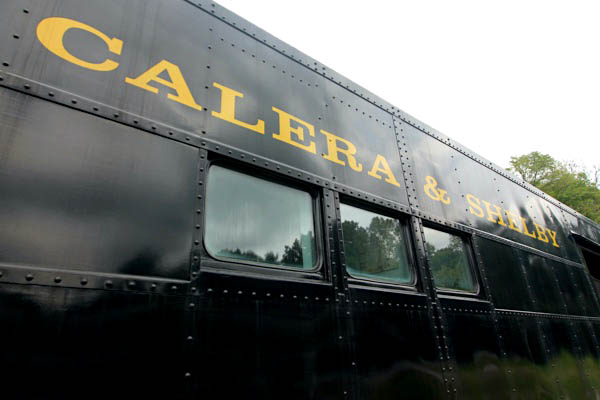
Aug 2021 / RWH
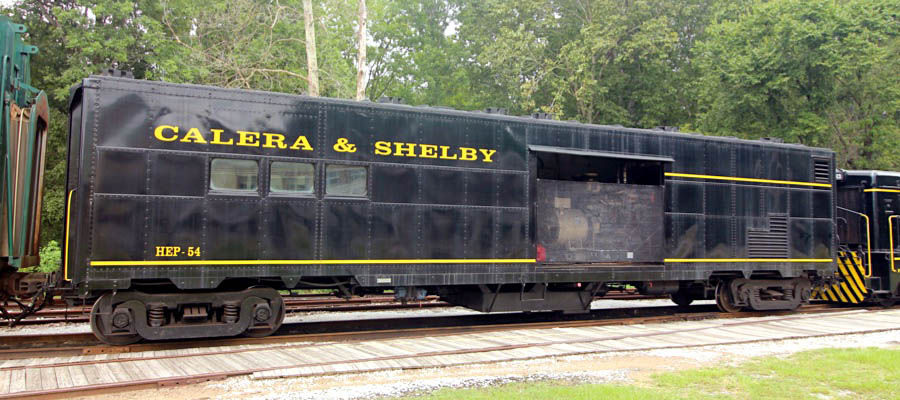
Calera, Al / Aug 2021 / RWH
Cabooses
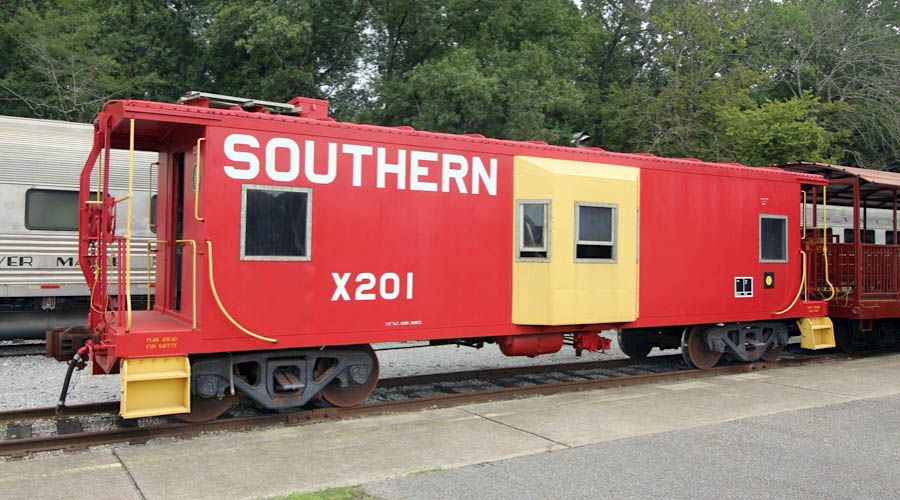
Southern Railway #X201
Calera, Al / Aug 2021 / RWH
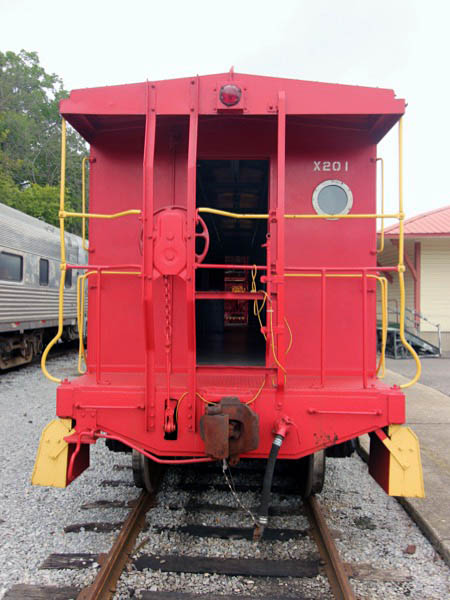
Calera, Al / Aug 2021 / RWH
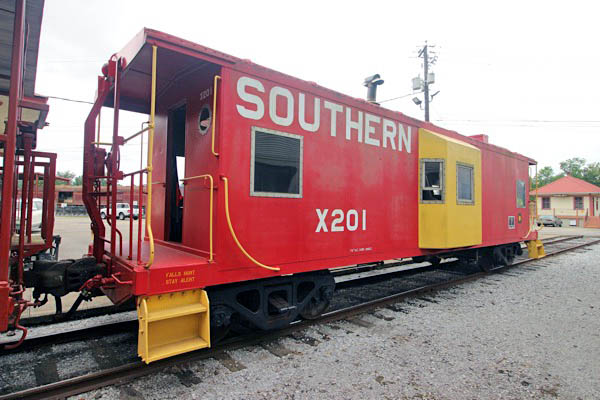
Calera, Al / Aug 2021 / RWH
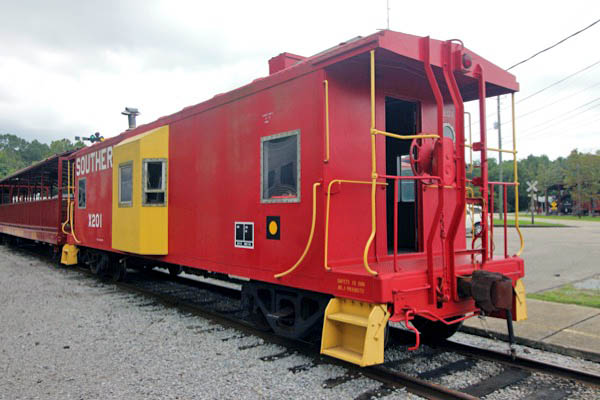
Aug 2021 / RWH
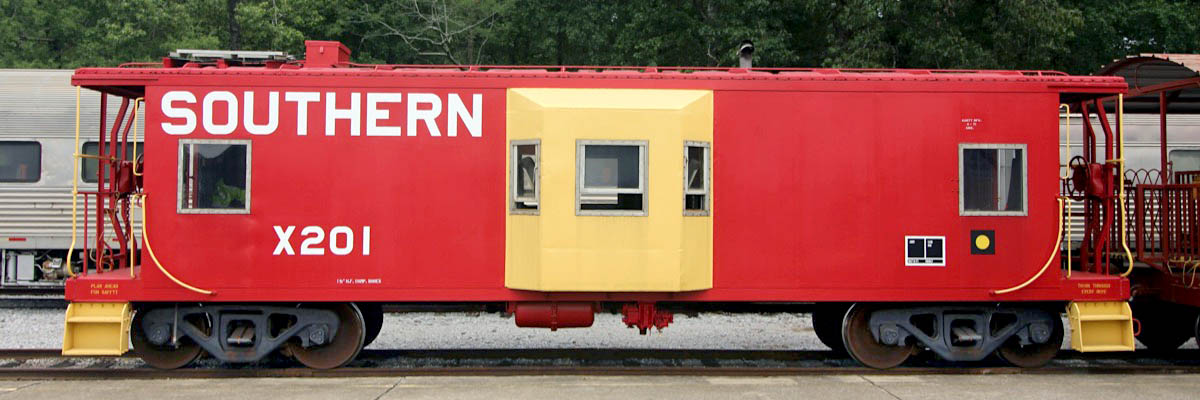
Calera, Al / Aug 2021 / RWH
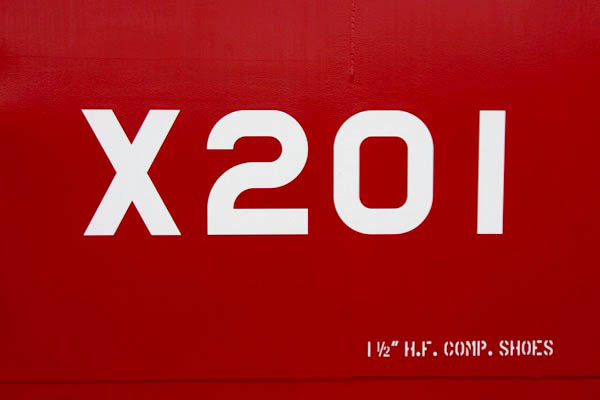
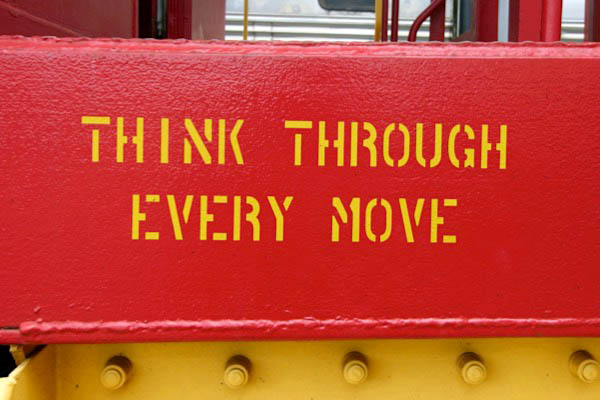
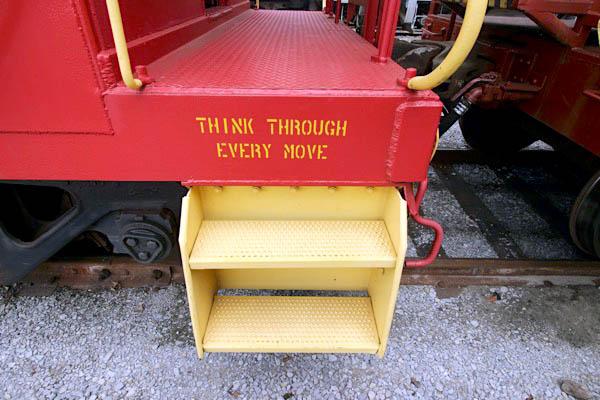
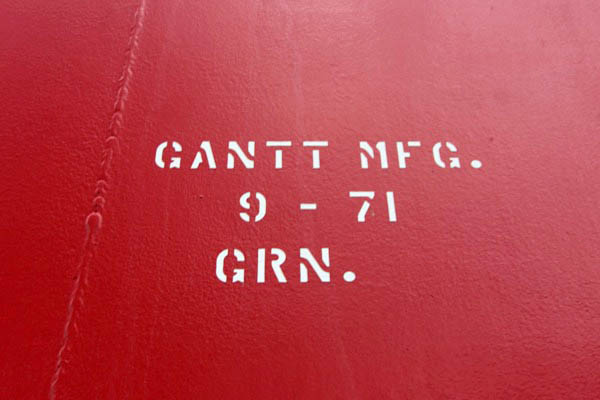
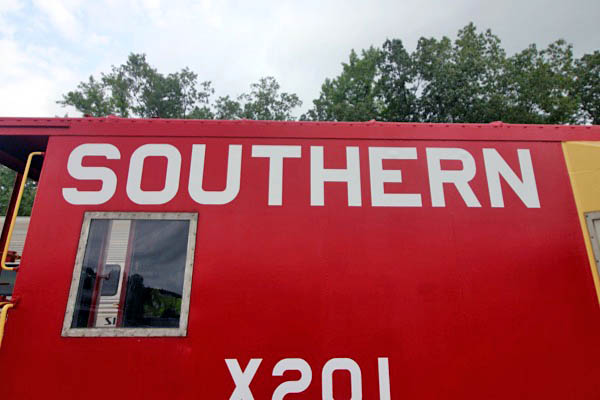
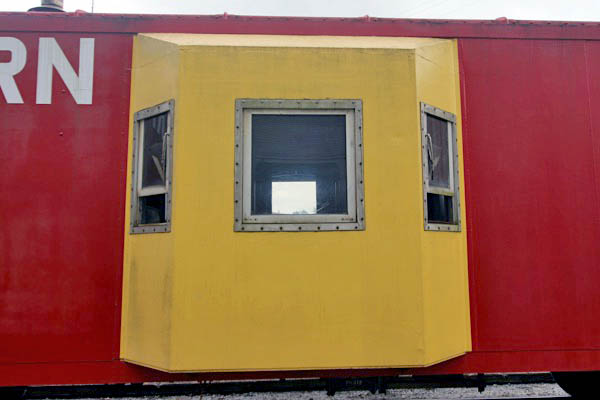
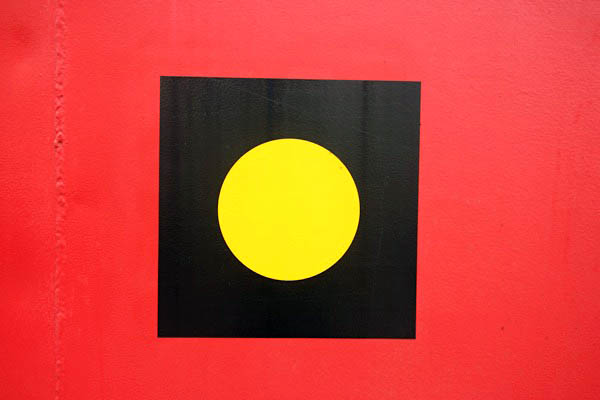
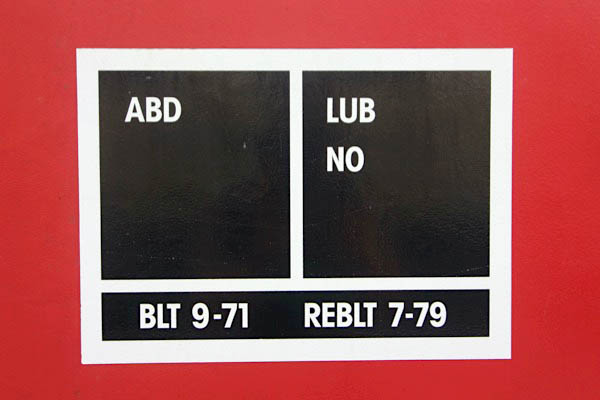
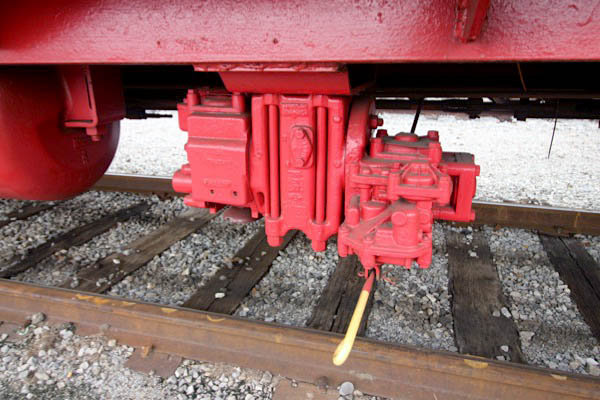
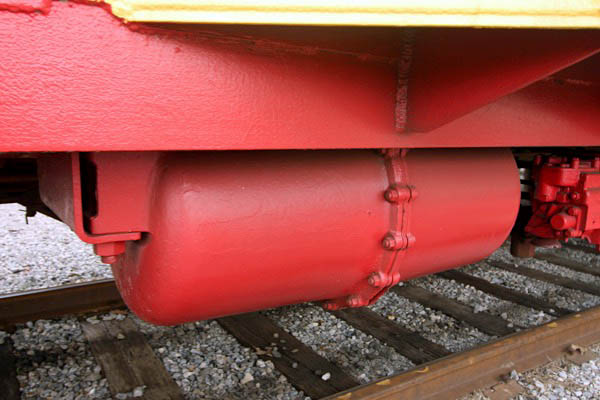
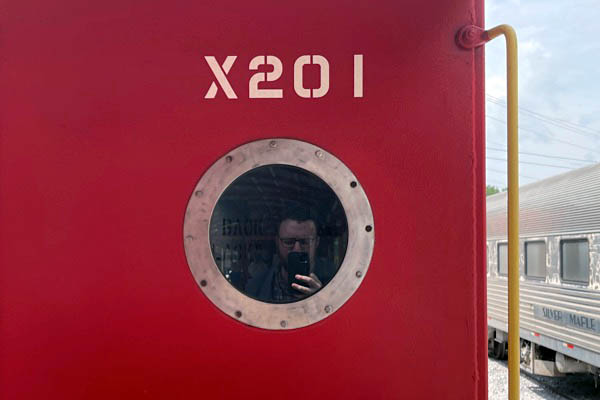
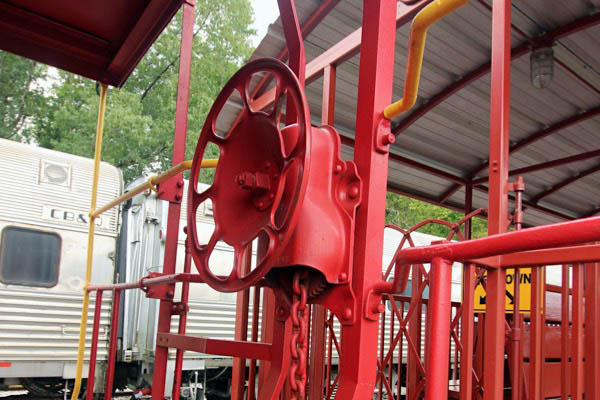
Aug 2021 / RWH
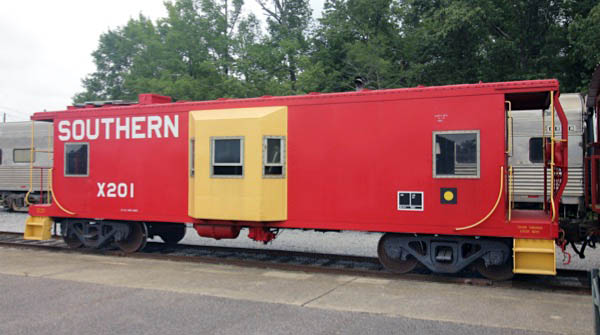
Calera, Al / Aug 2021 / RWH
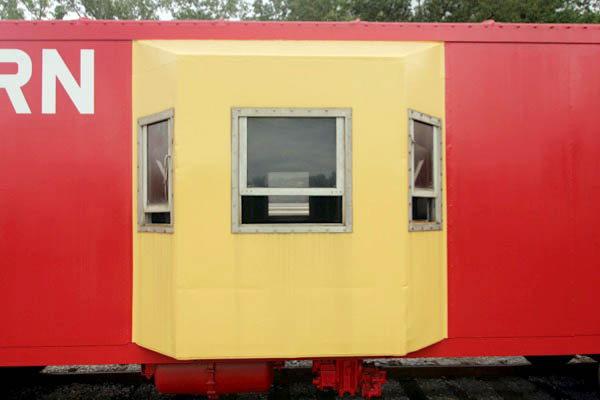
Aug 2021 / RWH
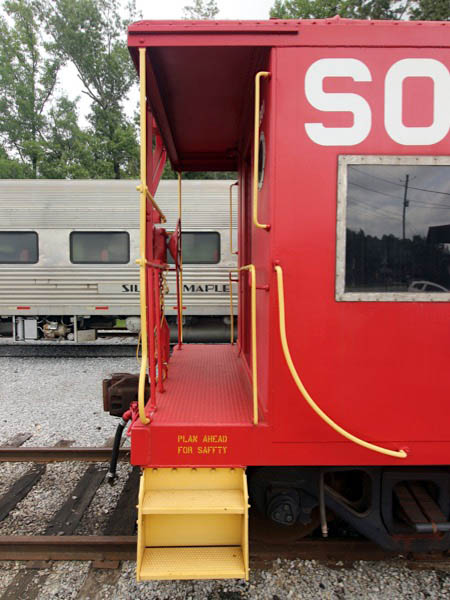
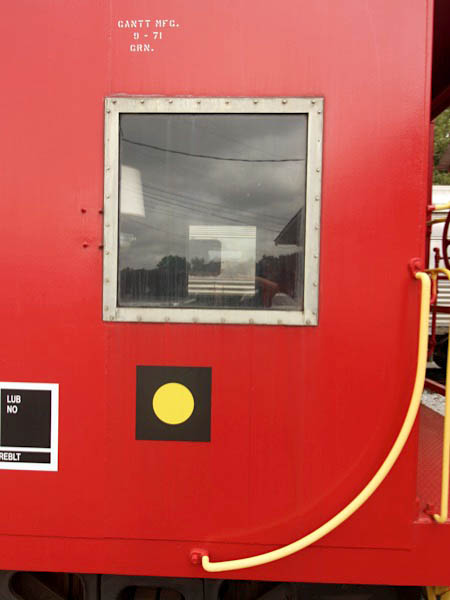
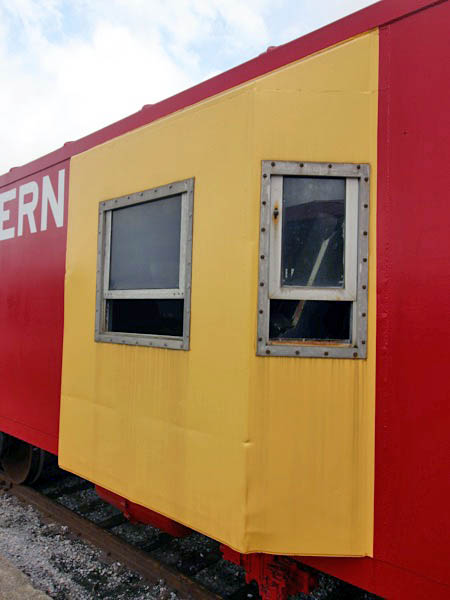
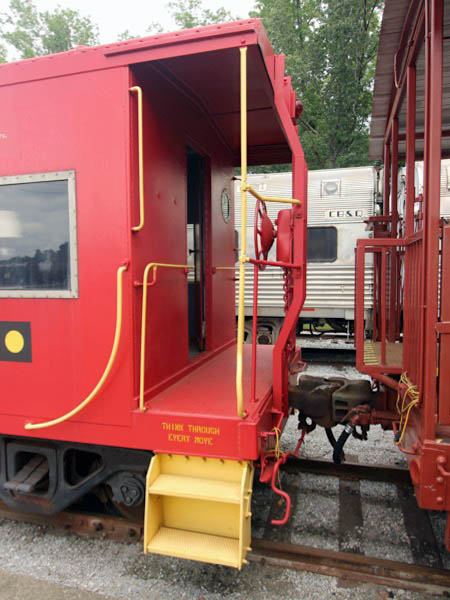
Aug 2021 / RWH
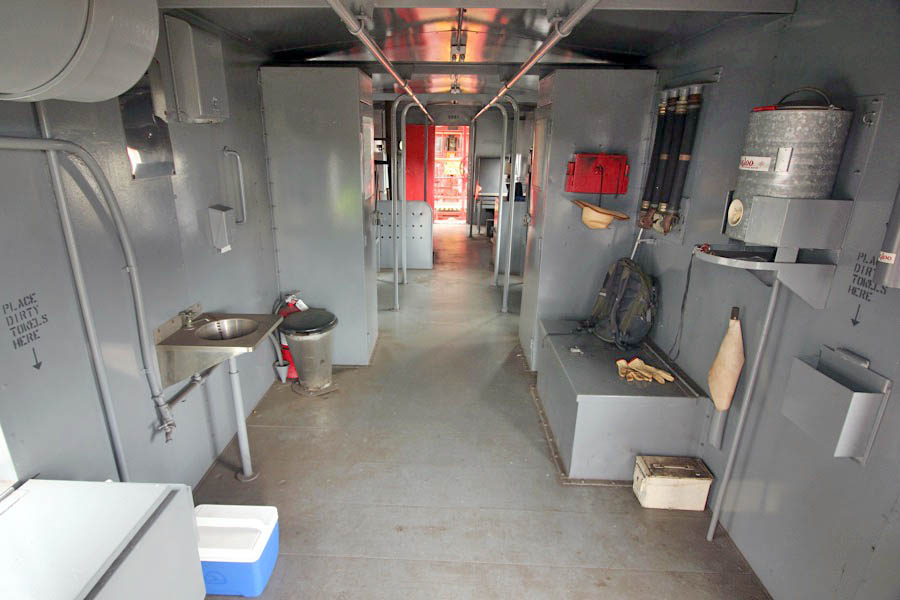
Aug 2021 / RWH
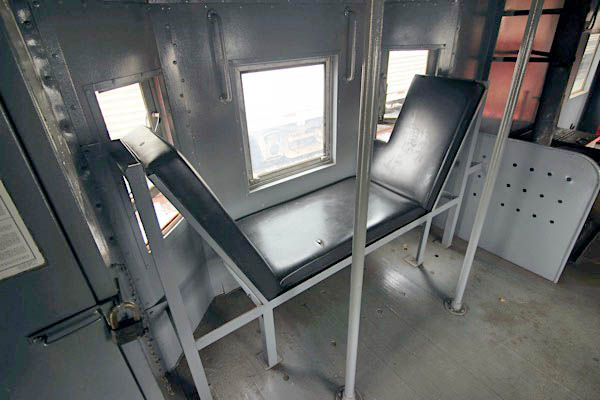
Aug 2021 / RWH
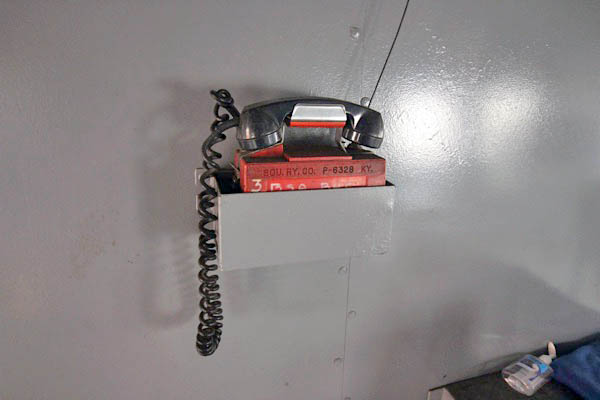
Aug 2021 / RWH
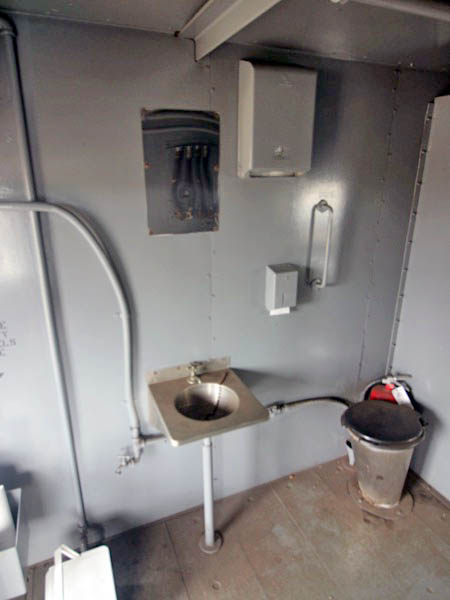
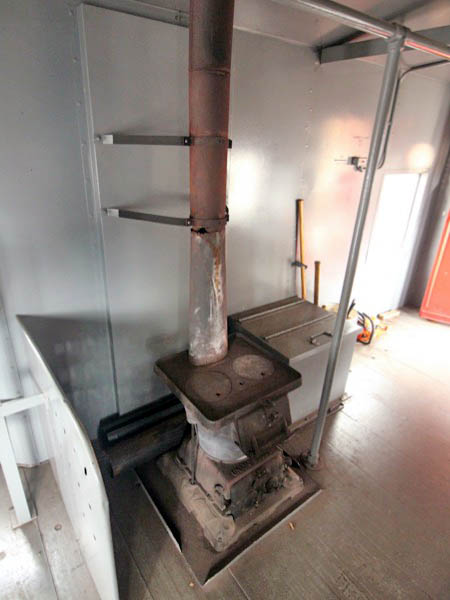
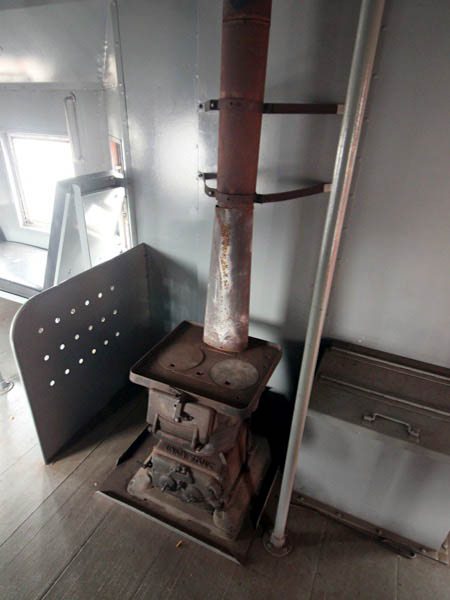
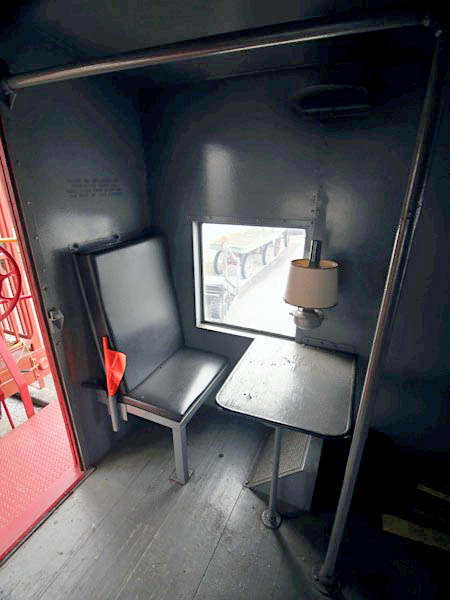
Aug 2021 / RWH

Calera, Al / Aug 2021 / RWH

See also our complete Southern Railway Bay Window Survivors scrapbook in Mainlines
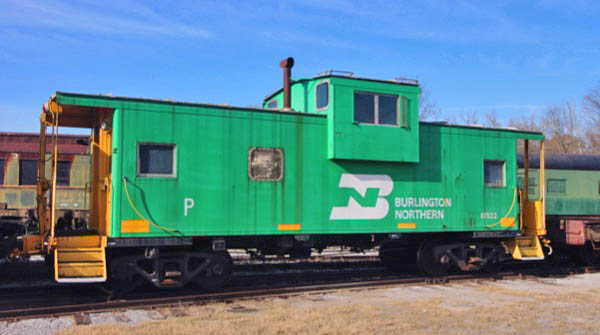
Burlington Northern #10522
wide vision caboose (1970) / Calera, Al / Nov 2019 / RWH
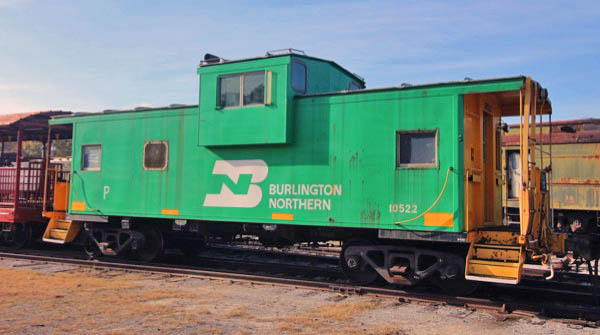
Calera, Al / Nov 2019 / RWH
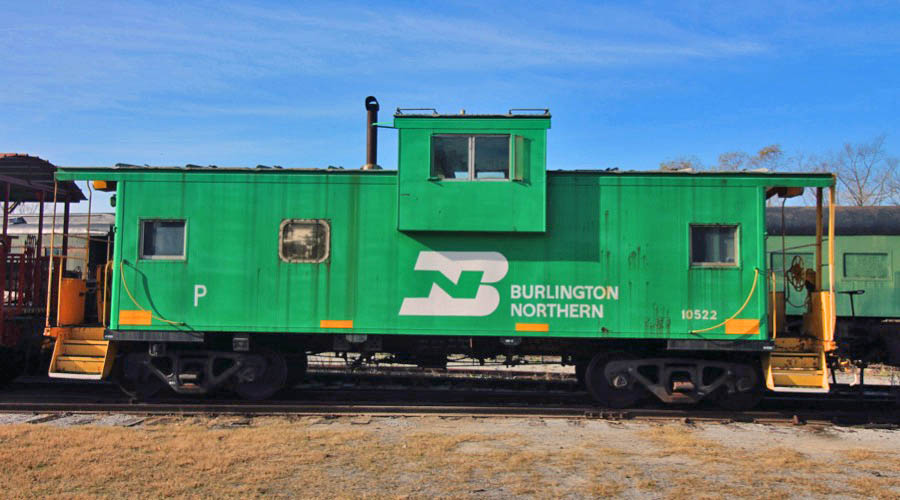
Calera, Al / Nov 2019 / RWH
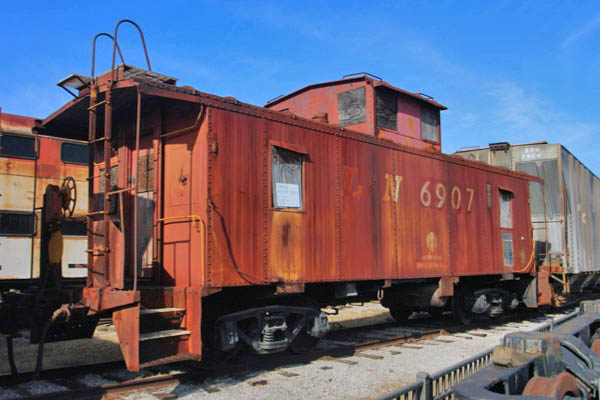
Louisville & Nashville #6907
steel caboose (1952) / Calera, Al / Nov 2019 / RWH
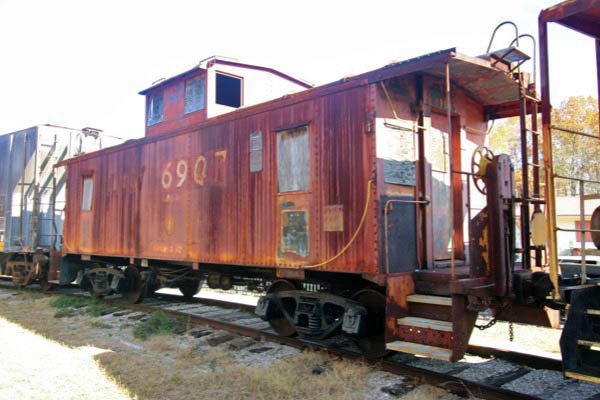
Calera, Al / Nov 2019 / RWH
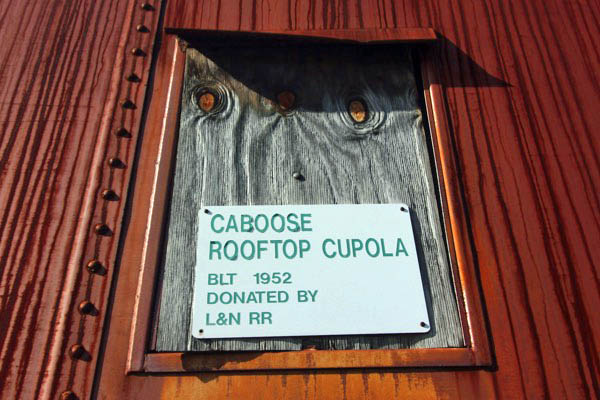
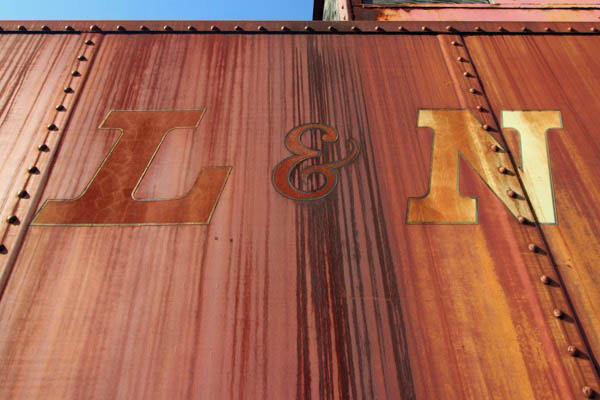
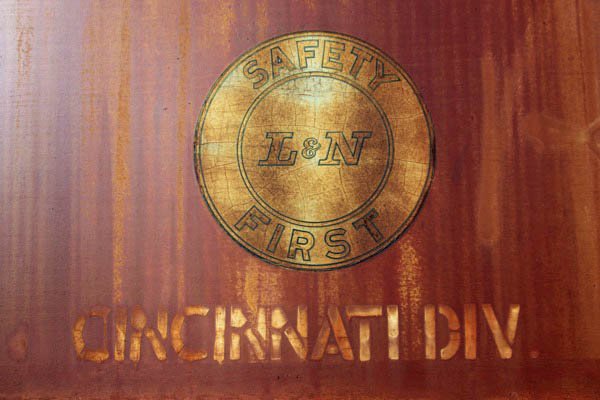
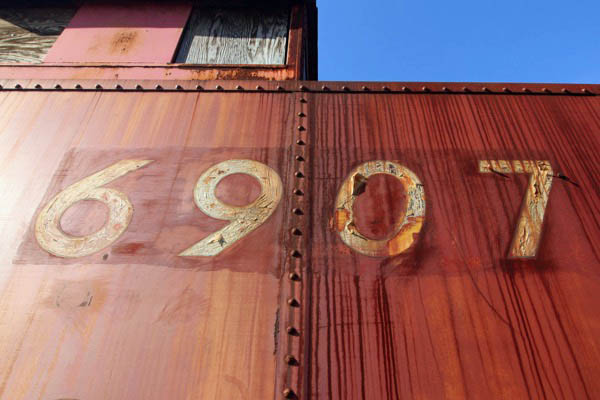
Nov 2019 / RWH
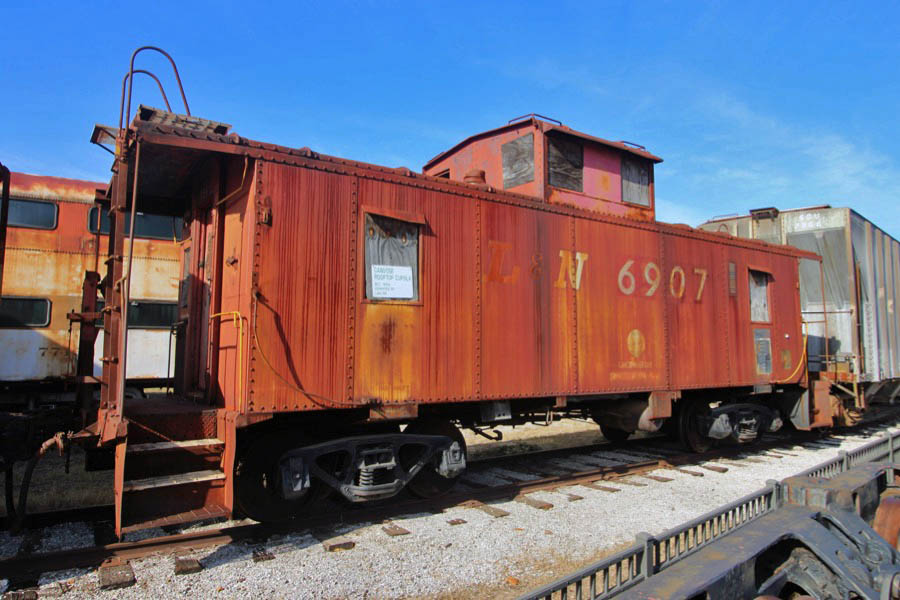
Calera, Al / Nov 2019 / RWH
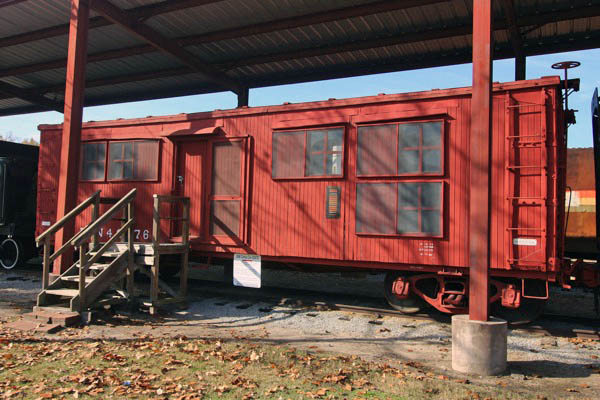
Lousiville & Nashville #42476
wooden camp car (1921) / Calera, Al / Nov 2019 / RWH
Freight
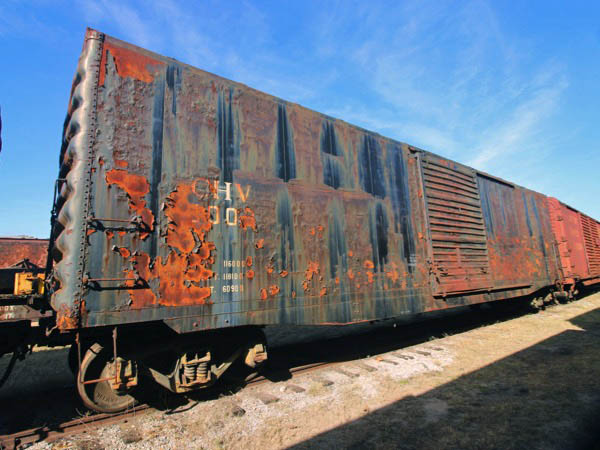
Chattahoochee Valley #9003
50' boxcar / Calera, Al / Nov 2019 / RWH
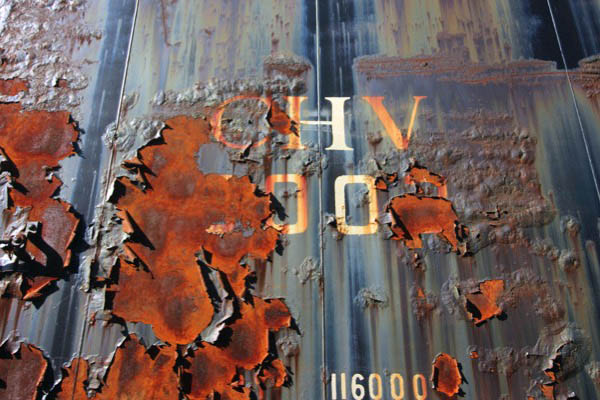
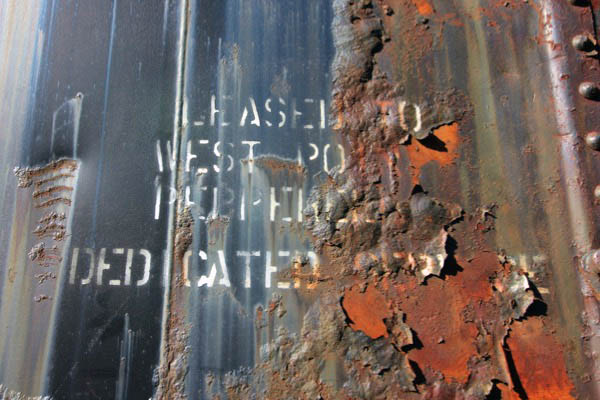
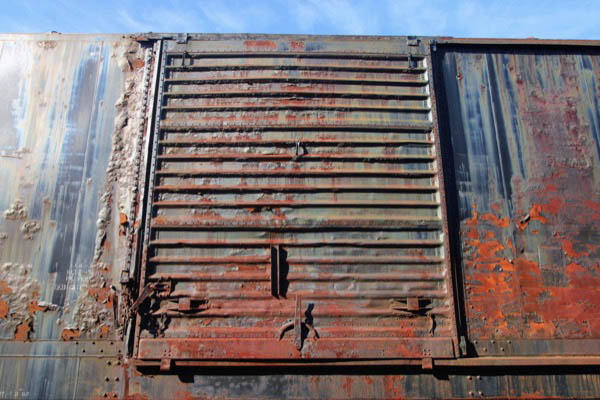
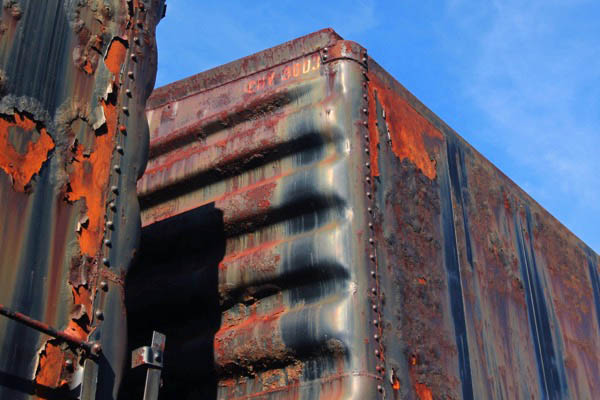
Nov 2019 / RWH
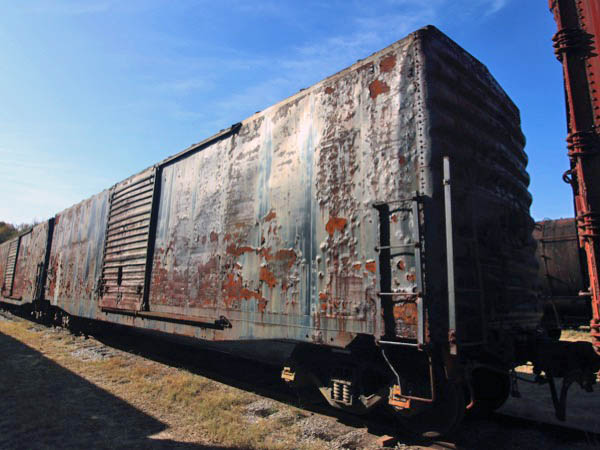
Calera, Al / Nov 2019 / RWH

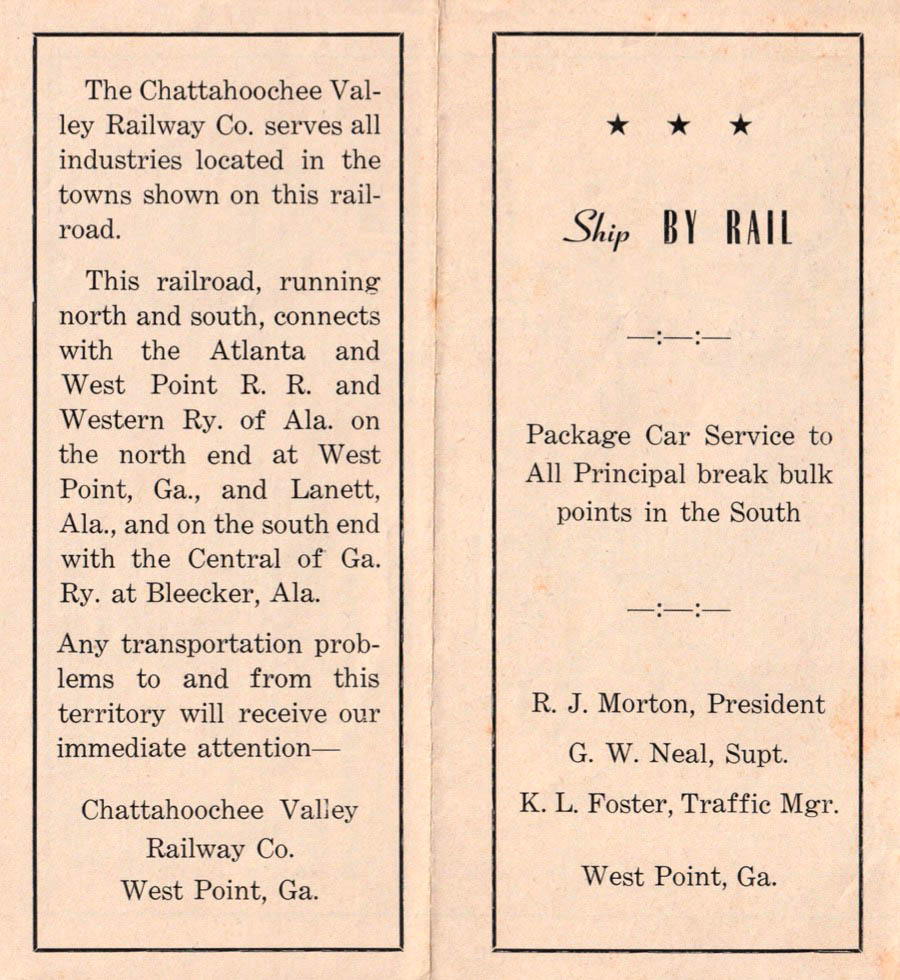 Boxcars 9003, 9004 and 9007 were acquired from the Chattahoochee Valley Railroad in 1992. They have a maximum weight capacity of 116,000, 110,000, and 110,000 respectively. No. 9003 and 9007 hold 4,923 cubic feet of cargo while 9004 holds 4,918. Each boxcar is 50' in length. They were built between January and February of 1962 for the Atlantic Coast Line as 32353, 32257, and 32253. Later, following the merger of the Seaboard Air Line Railroad with the Atlantic Coast Line Railroad to form the Seaboard Coast Line, these three cars were renumbered ,adding a six before the original number, as SCL 632353, SCL 632257, and SCL 632253.
Boxcars 9003, 9004 and 9007 were acquired from the Chattahoochee Valley Railroad in 1992. They have a maximum weight capacity of 116,000, 110,000, and 110,000 respectively. No. 9003 and 9007 hold 4,923 cubic feet of cargo while 9004 holds 4,918. Each boxcar is 50' in length. They were built between January and February of 1962 for the Atlantic Coast Line as 32353, 32257, and 32253. Later, following the merger of the Seaboard Air Line Railroad with the Atlantic Coast Line Railroad to form the Seaboard Coast Line, these three cars were renumbered ,adding a six before the original number, as SCL 632353, SCL 632257, and SCL 632253.
In 1983, SCL 632353, SCL 632257, and SCL 632253 along with several other cars, were acquired by the Chattahoochee Valley Railway which renumbered the cars CHV 9003, CHV 9004 and CHV 9007 which are the numbers they still wear today. As the Chattahoochee Valley Railway's older 40' boxcars began to wear out, they purchased several 50' boxcars from nearby railroads or from companies that specialized in rebuilding freight cars.
In October of 1992, the Heart of Dixie Railroad Museum acquired 9003, 9004 and 9007. They are primarily used for onsite storage and have proven quite useful in their retirement.
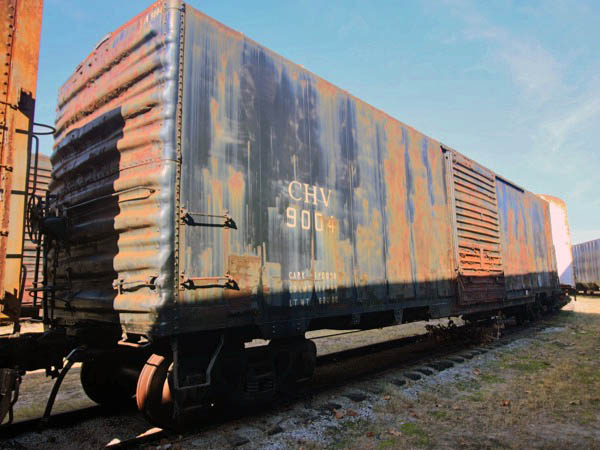
Chattahoochee Valley #9004
Calera, Al / Nov 2019 / RWH
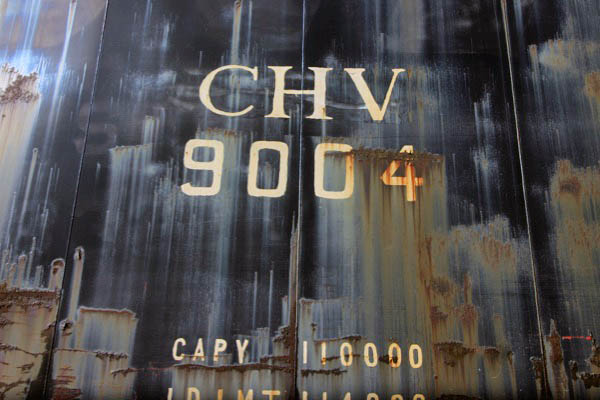
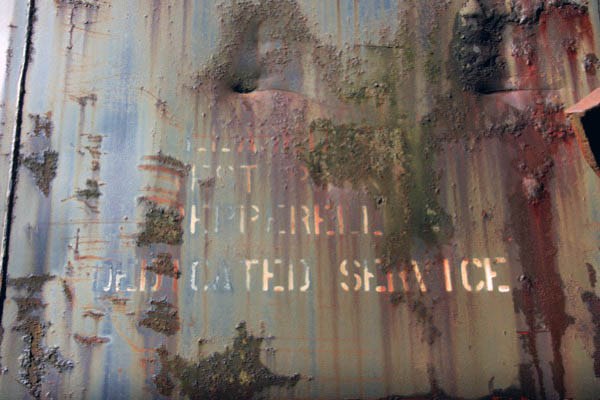
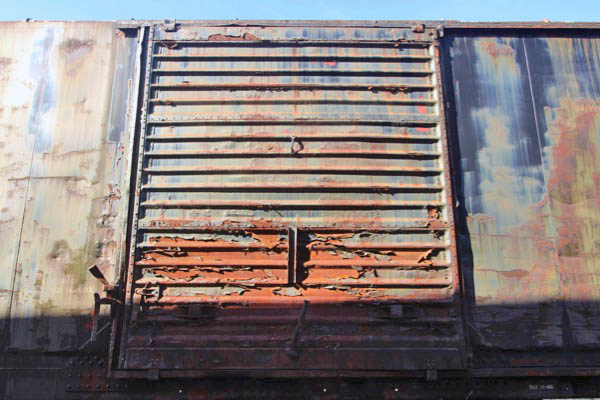
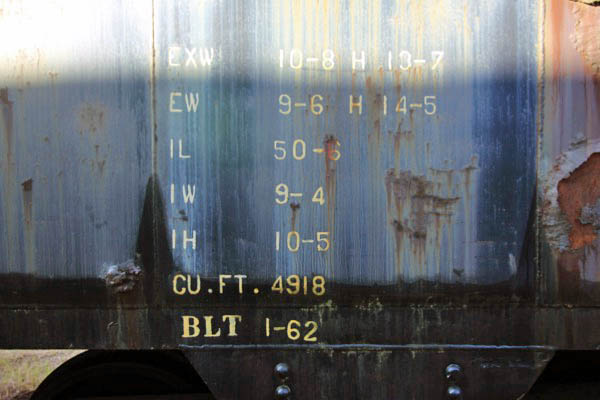
Nov 2019 / RWH
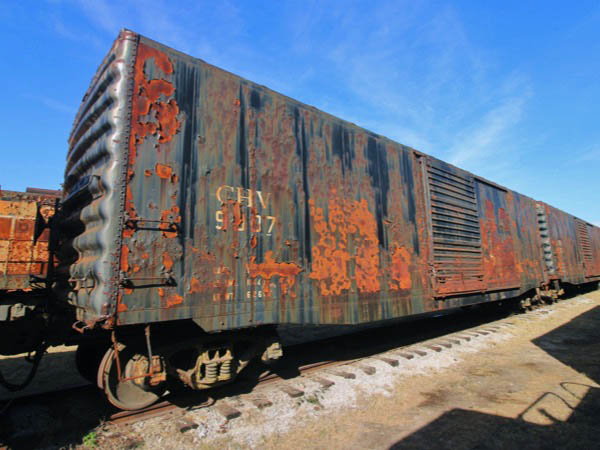
Chattahoochee Valley #9007
Calera, Al / Nov 2019 / RWH
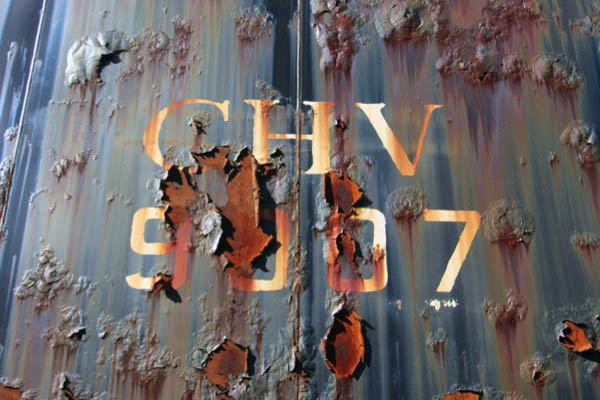
Nov 2019 / RWH

See also our complete Chattahoochee Valley Railroad scrapbook in Shortlines
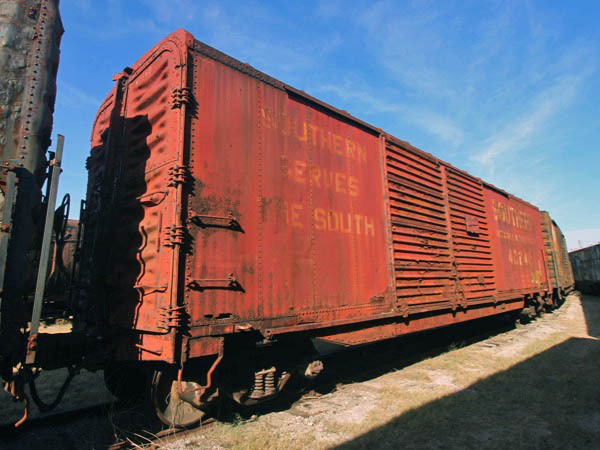
Southern Railway #40240
double-door boxcar / Calera, Al / Nov 2019 / RWH
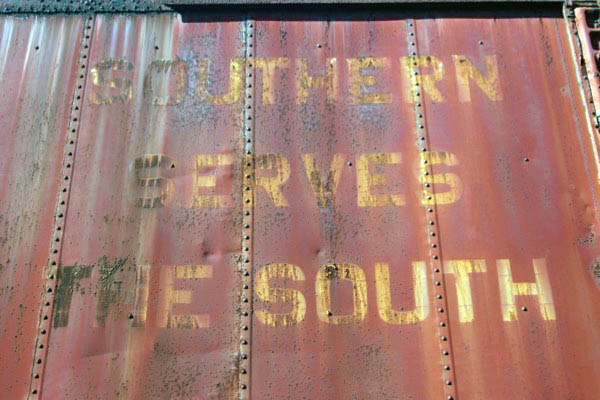
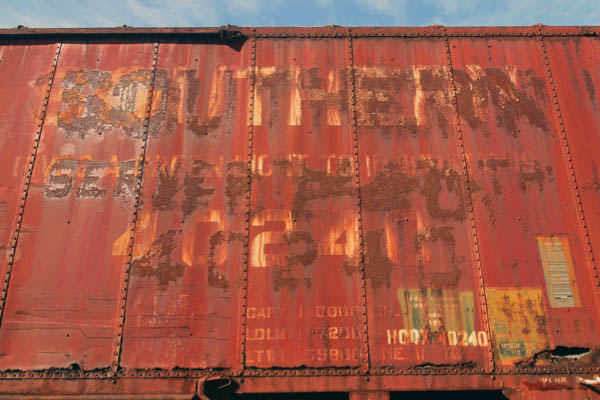
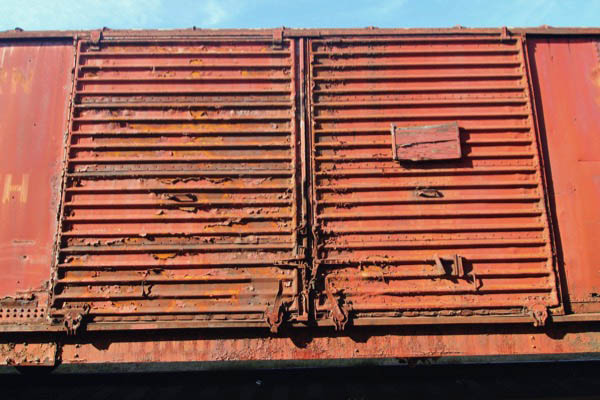
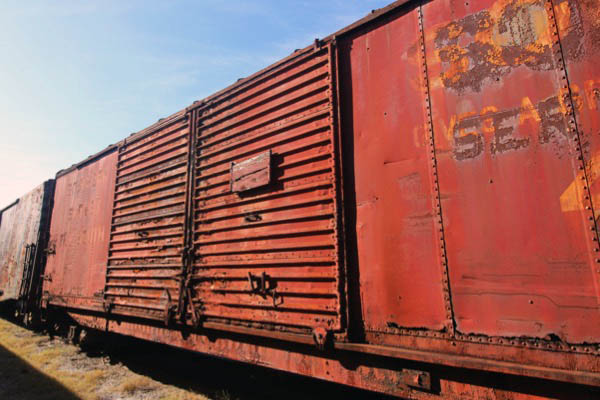
Nov 2019 / RWH
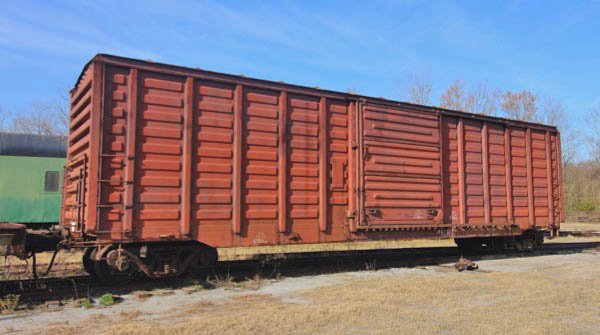
Trinity Industries #PS46
scale test car / Calera, Al / Nov 2019 / RWH
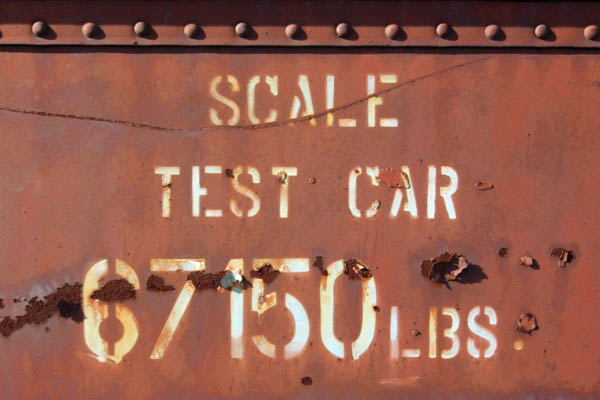
RWH
